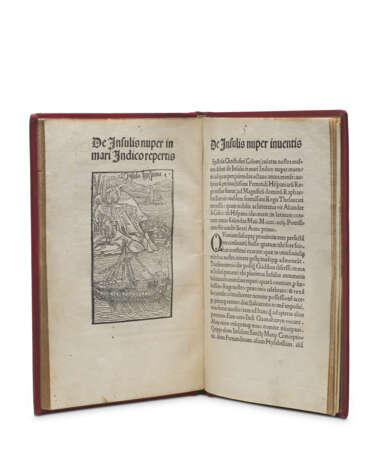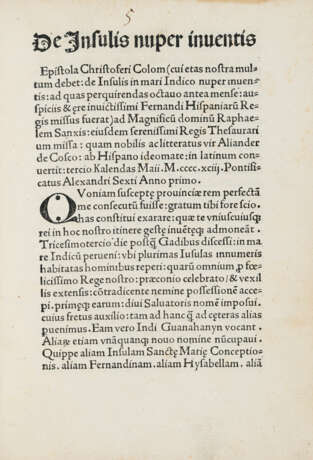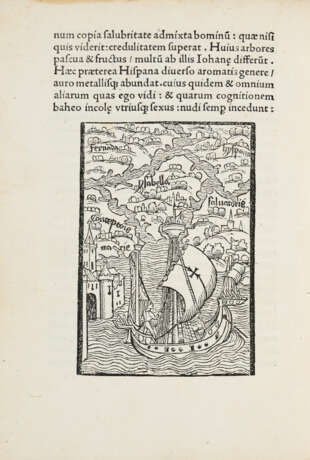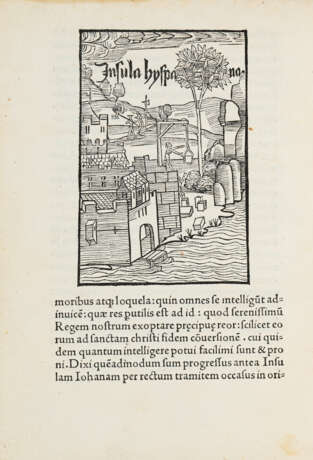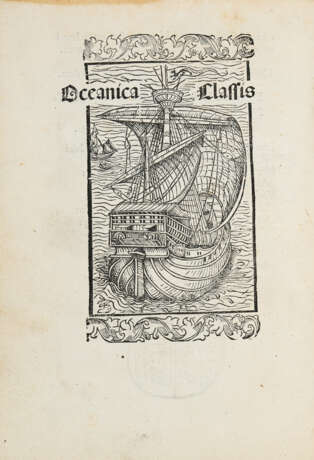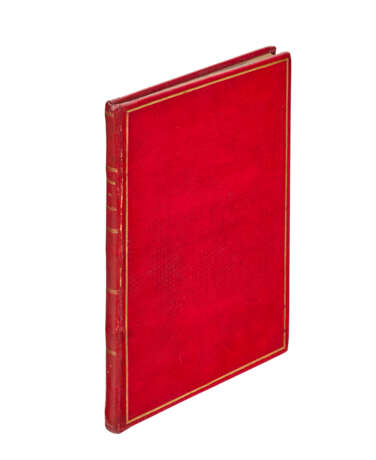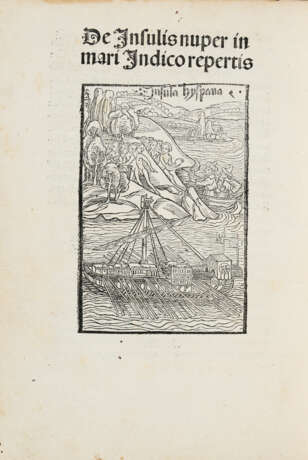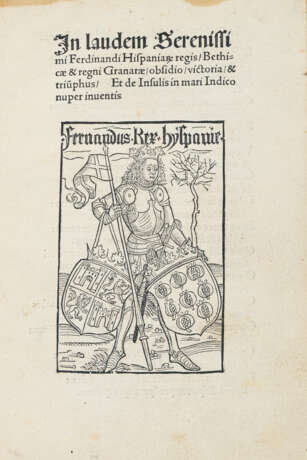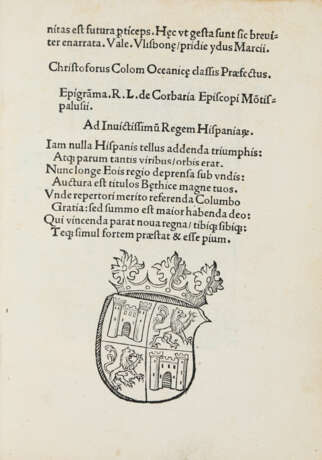ID 1471954
Lot 31 | De Insulis nuper inventis
Valeur estimée
$ 1 500 000 – 2 000 000
• The earliest obtainable illustrated edition of the Columbus Letter;
• The founding text of Americana. The events it relays irrevocably altered the course of world history—marking the opening of sustained communication across the Atlantic.
• Three of the woodcuts are the earliest printed depictions of the Americas;
• The Henry A. Huth and J.C. McCoy copy, in private hands since at least the 19th century.
Christopher Columbus’s famous letter announcing his discoveries was dispatched to Ferdinand and Isabella upon his return to Europe in the spring of 1493. In it, he became the first modern European to describe the Americas. Through the printing of this description, “the existence of an American continent was now made common knowledge and history was re-orientated” (PMM).
The announcement of the voyage set printing presses rolling across Europe, in one of the world’s first media frenzies. There are nine known surviving 15th-century editions of this letter, but there were likely once more. The first of them was printed in Spanish at Barcelona in March or April of 1493. It exists today in only one copy and was not discovered until the 19th century. The manuscript version of this letter is lost.
The first Latin edition of the letter was printed at Rome later in 1493. Latin was the language in which it spread across Europe. When it crossed the Alps and reached Basel, the Basel printer became the first to include illustrations of the New World. The first Basel edition of 1493 survives in 5 copies only, all in institutions. The second Basel edition – the present work – is well represented in institutions but only three copies (one imperfect) besides this one have been offered at auction in over 60 years. The Basel editions are the only 15th-century editions of the Latin text to have been illustrated. As the letter was an announcement of breaking news, and Columbus and his successors continued to go back and forth across the Atlantic, it quickly became out of date and there are very few editions made after 1494.
The woodcuts are the earliest printed depictions of the Americas. The map, though highly stylized, "is the only fifteenth-century printed map to show any part of America" (Campbell p.100). It shows outlines of Hispaniola and four islands in the Bahamas, of which only Ysabella is shown definitely as an island. The woodcuts are as follows:
(1) portrait of King Ferdinand of Spain (recut from the 1493 edition);
(2) Columbus and another European in a boat landing on the shore, peopled by Natives, at top of the woodcut the words "Insula Hyspana";
(3) Map of the islands discovered by Columbus during his first voyage, viz., Hispaniola. Fernandina, Ysabella, San Salvador and Santa Maria de la Concepcion;
(4) A port town and fort under construction on Hispania, and the words "Insula Hys-Pana";
(5) Armorial of Castile and Leon;
(6) A fine full-page woodcut of a caravel, the words "Oceanica Classis".
The Columbus letter is preceded by a drama in prose and verse celebrating the military campaign under Ferdinand and Isabella to capture Grenada, ending eight centuries of Muslim rule in Spain and Portugal. Written by Verardus and performed at Rome in 1492, editions were printed at Rome in 1492 and 1493. The conjunction of the two texts here serves to emphasize the power of Ferdinand and Isabella and celebrate their annus mirabilis of 1492 and is new to this edition, not present in the first Basel edition. Campbell, Earliest Printed Maps 70, pp.100-102; Church 8; Alden-Landis, 494/9; Sabin, 98923; Goff V-125; Davis, Fairfax-Murray, German, 424; Medina 15; JCB I, 25; ISTC iv00125000.
Quarto (207 x 145mm). 36 leaves. Six woodcuts, comprising five large views and one coat-of-arms, Lombard initials, a few initial spaces (narrow stain to top paper edge of first and last several leaves including title, a very tiny worm-hole in outside margin.) 19th-century red morocco-grained sheep, covers gilt ruled, spine gilt (minor repair to joints). Provenance: about four pages in the first section with contemporary marginalia and a little underscoring in neat red ink – Henry A. Huth, 1815-1878 (morocco bookplate, his catalogue, 1880, p.1521; his sale, Sotheby, Wilkinson & Hodge, part 8, July 1919, lot 7707) – J.C. McCoy, 1862-1934 (morocco bookplate) – Juan Gyselynck (engraved pictorial bookplate) – Florencio Gavito, viscount of Alborada and Villarubio, 1882-1960 (armorial bookplate).
| Lieu d'origine: | Suisse |
|---|---|
| Catégorie maison de vente aux enchères: | Livres imprimés |
| Lieu d'origine: | Suisse |
|---|---|
| Catégorie maison de vente aux enchères: | Livres imprimés |
| Adresse de l'enchère |
CHRISTIE'S 8 King Street, St. James's SW1Y 6QT London Royaume-Uni | |
|---|---|---|
| Aperçu |
| |
| Téléphone | +44 (0)20 7839 9060 | |
| Commission | see on Website | |
| Conditions d'utilisation | Conditions d'utilisation |
